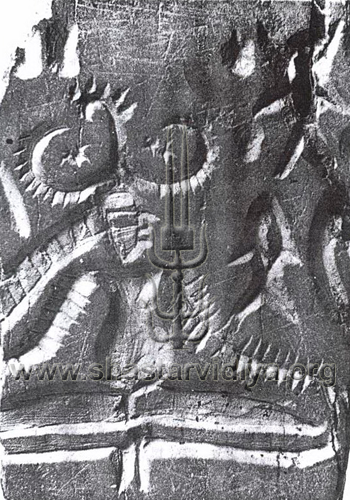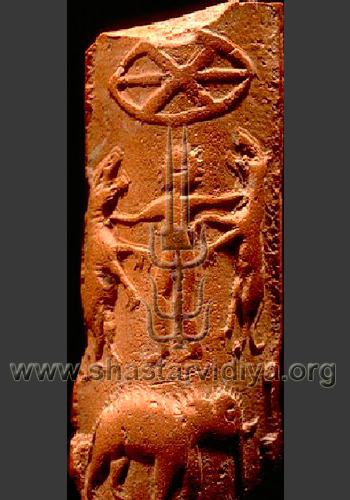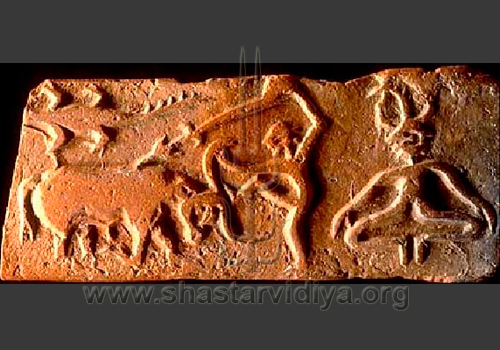"Absorbed in devotion of Shiva, the Pashupati repeatedly uttered 'Shiv Shiv'"
(Sarbloh Guru Granth Sahib)
The earliest known devotees of Shiva, and the masters of Sanatan Shastar Vidiya, were the 'Pashupati' - literally referring to the 'Pati' (master) of the 'Pashu'(beast), i.e., ancestors of modern man. Inspired by Shiva, these ancient Indians would be the first to develop the key skills of combat. They quite literally wrestled and mastered the beasts of the jungle around them, and in turn subdued their own 'inner beast', i.e., primeval passions. The Pashupati were the oldest pre-Aryan Shivite sect; known to carry clubs in imitation of their deity 'Lakulish', the club bearing Shiva, and "reminiscent of the stereotypical cave man with club in hand" (see Thomas McEvilley, The Shape of Ancient Thought, (Allworth Communications Inc, 2001), 227).
"Such wandering bands of warrior ascetics the oldest spiritual texts of the world the Vedas refer to as the Vratyas (people who have taken vows), who practiced flagellation and other forms of self-mortification and travelled from place to place in bullock carts."
(Wendy Doniger, The Hindus an alternative history, (Oxford University Press, 2009), 120)
The Vedas sing of these militant ascetic devotees of 'Rudra' (the howler, i.e., Shiva):
"Long-Hair holds fire; holds the drug; holds sky and earth.....These ascetics, swathed in wind, put dirty saffron rags on� Crazy with asceticism, we have mounted the wind. Our bodies are all you mere mortals can see..... The Long-Hair drinks from the cup, sharing the drug with Rudra."
(Ibid)
These martial ascetics were known to have roamed across ancient India in small groups, or alone; fully-armed and fearless.
"Vratyas were sometimes regarded as inside, sometimes outside mainstream society. The Brahmins sought to bring them into the Vedic system by special purification rituals and the Vratyas may have introduced some of their own beliefs and practices into Vedic religion."
(Ibid)
Guru Gobind Singh speaks of these earliest of Indian warriors:
"Absorbed in devotion of Shiva, the Pashupati repeatedly uttered 'Shiv Shiv'."
(Sarbloh Guru Granth Sahib, 2 Volumes (Buddha Dal, 2000), 1:2:90)







